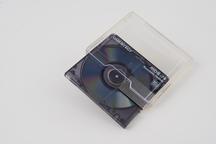


Edison Type A 'Concert' phonograph, model SM, with wax cylinders, by Thomas A. Edison Inc., American, 1910-1912
Thomas Edison introduced the ‘concert’ phonograph in 1899 to improve the volume levels the phonograph could achieve. Concert phonograph cylinders were larger than their standard counterpart, measuring 5 inches in diameter. This meant the recording would create a deeper cut into the wax and could achieve a higher speed, thus increasing the volume level.
However, the introduction of gold moulded records in 1902 improved the volume issue, and so concert cylinders were no longer necessary and their popularity waned. As a consequence, factory conversion kits could be purchased to enable concert phonographs to play standard sized cylinders. This is an example with a conversion kit.
Look closer
Edison 'Concert' phonographDetails
- Category:
- Sound Reproduction
- Object Number:
- 1960-57
- Materials:
- metal (unknown) and wax
- type:
- phonograph
- credit:
- Mrs. W.M. Sykes.




